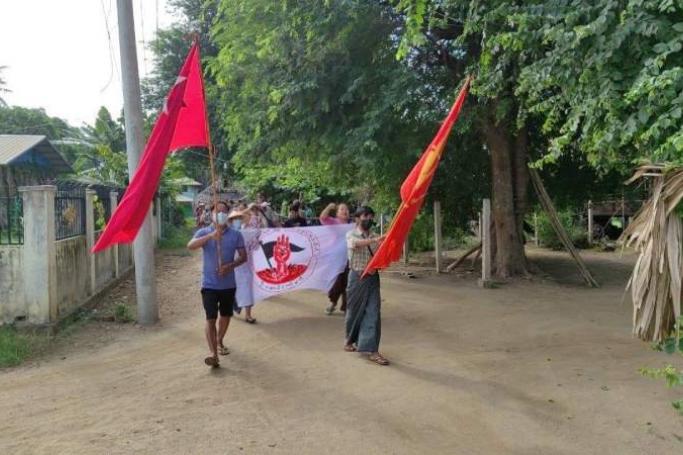Mizzima/AFP
Arson, gang wars, illegal drugs and far too little to eat – that is the reality for hundreds of thousands of Muslim Rohingya refugees caught in limbo in Bangladesh camps.
With the ongoing conflict in Rakhine State, the Myanmar junta and Bangladesh repatriation plan appears to be going nowhere.
Little wonder hundreds are seeking to flee on rickety boats, setting sail for Indonesia in search of a better life.
POSSIBLE ARSON
The latest incident to disrupt the camps happened in the early morning of Sunday 7 January.
Thousands of Rohingya refugees were left without shelter after a suspected arson attack ripped through their camp burning nearly 800 homes, an official said.
Bangladesh is home to around a million Rohingya, many of whom fled a 2017 military crackdown on the mainly Muslim minority in neighbouring Myanmar that is now subject to a UN genocide probe.
The United Nations refugee agency said “nearly 7,000 Rohingya refugees” had been left homeless, but that there were no casualties.
The blaze tore through the tightly packed complex of bamboo and tarpaulin shelters in the early hours of the morning at a camp in the country’s southeast, refugee commissioner Mizanur Rahman said.
4,000 HOMELESS
“At least 711 shelters were fully burnt and 63 were partially damaged,” said Rahman, who put the number of homeless at 4,000.
“We have ordered a probe into the fire,” he added. “We suspect it is an act of arson”.
The UN said 120 facilities, including learning centres, mosques and healthcare centres, had also been “destroyed or damaged by the inferno”.
Some refugees had to tear down their homes to create corridors to stop the fire from spreading further.
“Refugees displaced by the fire are temporarily taking shelter within the camp’s community centres,” the UN refugee agency said in a statement.
TURF WARS
Fires in the dozens of Rohingya refugee camps in Bangladesh are common, especially during the dry season from November to April. But many of the camps are also riven by violence between rival Rohingya groups.
Police said security in the camps has worsened, with more than 60 refugees killed in turf wars and drug-related clashes last year, the highest number on record.
In March 2023, a fire in Kutupalong camp – one of the world’s largest refugee settlements – destroyed 2,000 shelters. Two years earlier, at least 15 Rohingya were killed and another 50,000 refugees were made homeless after a blaze in the same camp.
LIMITED RATIONS
The living conditions in the camps, including the problem of security, have worsened. Crime is rampant and two main political armed groups are fighting for territory. Food rations have reportedly been reduced.
All this is leading to more refugees willing to risk a dangerous sea journey to Indonesia in the hope of a better life. But the “welcome mat” in Indonesia’s Aceh has been removed, with villagers, and recently students, attacking Rohingya encampments, posing a challenge for the authorities.
Meanwhile, in Rakhine State, Rohingya are in danger of getting caught up in the conflict between the junta and the Arakan Army. Rohingya living in IDP camps face challenges in terms of food, medicine and shelter.
NOT ENOUGH
Rohingya living in Bangladesh refugee camps said the partial restoration by the United Nations of food rations is inadequate because the lack of protein and nutritious food among basic items is having a significant impact on their well-being, according to RFA.
The U.N.’s World Food Program (WFP) announced Monday that it was increasing the monthly food provision for the refugees from U.S. $8 to $10 (877 to 1097 taka) per person, which was previously cut twice from $12 (1316 taka) because of funding shortages.
While this increase is supposed to help Rohingya offset the effects of rising inflation in Bangladesh, half a dozen refugees told BenarNews that this adjustment does little to compensate for the severe consequences of the original reduction from $12, an amount they thought was already insufficient.
Aid organizations appear to be struggling to get enough funding for Rohingya in the Bangladesh camps and for those in need in villages and IDP camps in Rakhine State.
What is apparent is the Rohingya crisis will continue until the Myanmar crisis ends.





